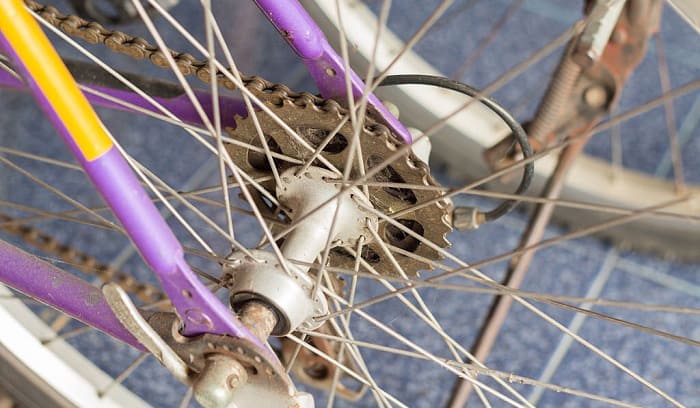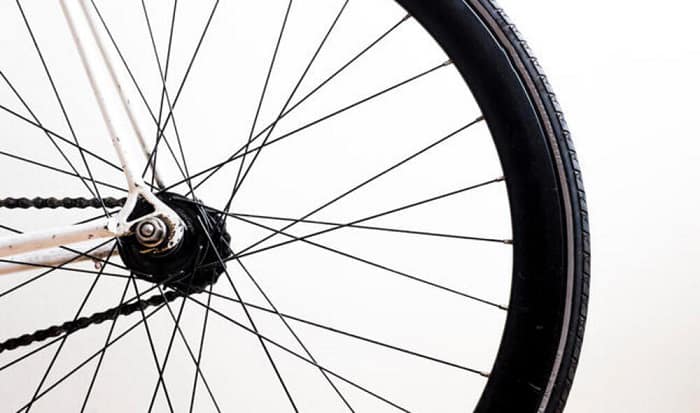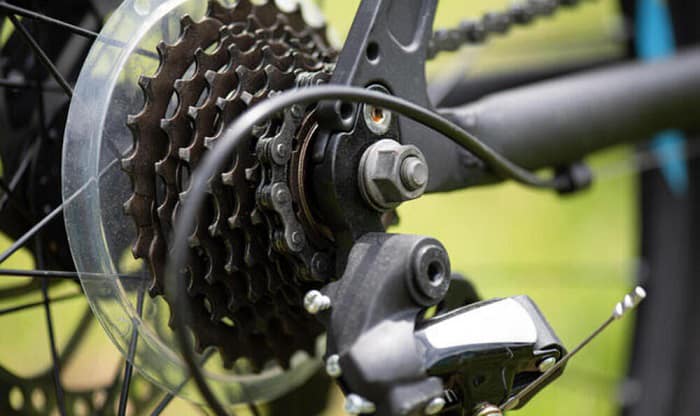When it comes to the riding experience, we get to choose between fixed gear or freewheel gear, as each has a cog on either side of the bike for us to adjust.
But, what is the difference between the two?
Fixed gear and freewheel bikes may look identical on the surface, but you will notice the difference when you ride. Single-speed freewheel bikes allow you to coast during your ride, while on a fixed gear bike, pedaling is required.
For more details, read the comparison between fixed gear vs freewheel below.
Table of Contents
What is Fixed Gear and How Does It Work?
A fixed gear bike is a type of bicycle that comes with a drivetrain but without freewheel mechanism. In other words, the pedals need to work together with the rear wheel to create movement. The gear of this kind of bike is ‘fixed’ and does not permit coasting.
Your pedals will move along with the wheels. If you pedal forward, you will move forward. And when you pedal backward, the wheels will follow the backward direction.
Why is this the case? Generally speaking, this bike type has a cog on the rear wheel that is permanently fixed with a lock ring. This cog has no ball bearing, which prevents the bicycle from moving without its interference.
The direct coupling between the cog on the fixed gear hub and the wheel requires the rider to apply a braking force using his legs and body weight.
Hence, a fixed gear requires more effort to ride than single-speed bikes.
What is a Freewheel on a Bike and How Does It Work?
Now that you know about fixed gears, you should learn the freewheel meaning as well.
Freewheel bikes come with a single set of gears connected to the rear wheel. This group of components allows the wheel to spin freely even when you are not pedaling forward or reversing.
Moreover, a freewheel on a bicycle basically works like a ratchet. A ratchet allows the bike to move in only one direction and prevents it from turning into the opposite direction. This is why you cannot pedal backwards on a freewheel no matter what.
The asymmetrical gear on this bike will work against the pawl while rotating in a different direction. This will lock the equipment into place and permit you to coast, especially downhill.
To understand freewheel bikes better, there are two important things you should know about how freewheel works:
- Power train
Freewheel bikes come with special components that work together to allow coasting. When you explore the different parts of a freewheel bike, you will notice a chain, two sprockets, and two pedals – these parts compose the power train.
Basically, the movement will initially start with the front sprocket that receives energy from your pedaling. As the front sprocket turns, the energy will automatically be transferred to the chain. The energy from the chain will then be transferred to the second sprocket or the rear sprocket.
Once the rear sprocket receives the energy from the pedaling, the wheel will turn and propels you to move forward.
You can control the speed of the powertrain by how fast you pedal on the bike. If you put more effort into your pedaling, the powertrain can get more energy and will make your speed faster.
- Coasting
Coasting is the most notable characteristic of a freewheel bike. A cyclist would prefer to use a freewheel bike because of this mechanism. If you love to ride downhill, the coasting mechanism will make your ride easier without requiring much energy.
Since there is a powertrain that gives you control over the speed of your bike, you can initially pedal faster, so the wheel spins at a speedier pace.
Once you notice that the wheel has considerable momentum, you can rest from pedaling and let the wheel work by itself.
Through the speed and gravity created by a downhill slope, coasting becomes possible in a freewheel bike.
Pros and Cons
Which one is better — fixed vs freewheel? This topic is a common debate among bike enthusiasts on Reddit and other platforms. The lists below may help you pick between the two.
1. Fixed Gear Bike
Pros:
- Makes you feel more connected to the bicycle because you have more control over its movement
- Allows you to go forward and backward with the help of fixed gear pedals
- Good for freestyle tricks
- Easy to maintain
Cons:
- Lacks coasting mechanism
- Can be harmful to your knees because of the amount of energy needed to pedal
- Difficult to use on descending hills
2. Freewheel bike
A freewheel mechanism is usually present in most mountain bikes and road bikes. A single speed freewheel bike is ideal to use for downhill cycling as you can coast, stand up on the pedals, and just do a casual ride.
Pros:
- Allows coasting
- Pedaling will not be too difficult
- Ideal for long rides because your legs will experience less fatigue
- Can do well on rough and bumpy roads
Cons:
- Not ideal to use if you want to become fitter quickly or need intensive exercise
- Requires brakes
- Higher maintenance
Conclusion
Choosing between freewheel vs fixed bikes greatly depends on your lifestyle, requirements, and needs.
If you want a vehicle that will keep you physically fit and require you to exert more energy, you can choose a fixed gear bike. On the other hand, if you frequently ride on tough and challenging roads, a freewheel type may be ideal for you.
So, knowing the difference between a fixed gear vs freewheel design is crucial to maximizing your riding experience. The right bike will help you become a better cyclist and appreciate this hobby even more.

“I ride my bike to work for years, but is that enough? Our carelessness towards our surroundings has taken a toll on the environment. And now, everyone is responsible for changes; even the most minor contribution is counted. With this hope and spirit, I started with my partner to establish Biketoworkday to help more individuals commute to their work sites on their bikes.”




